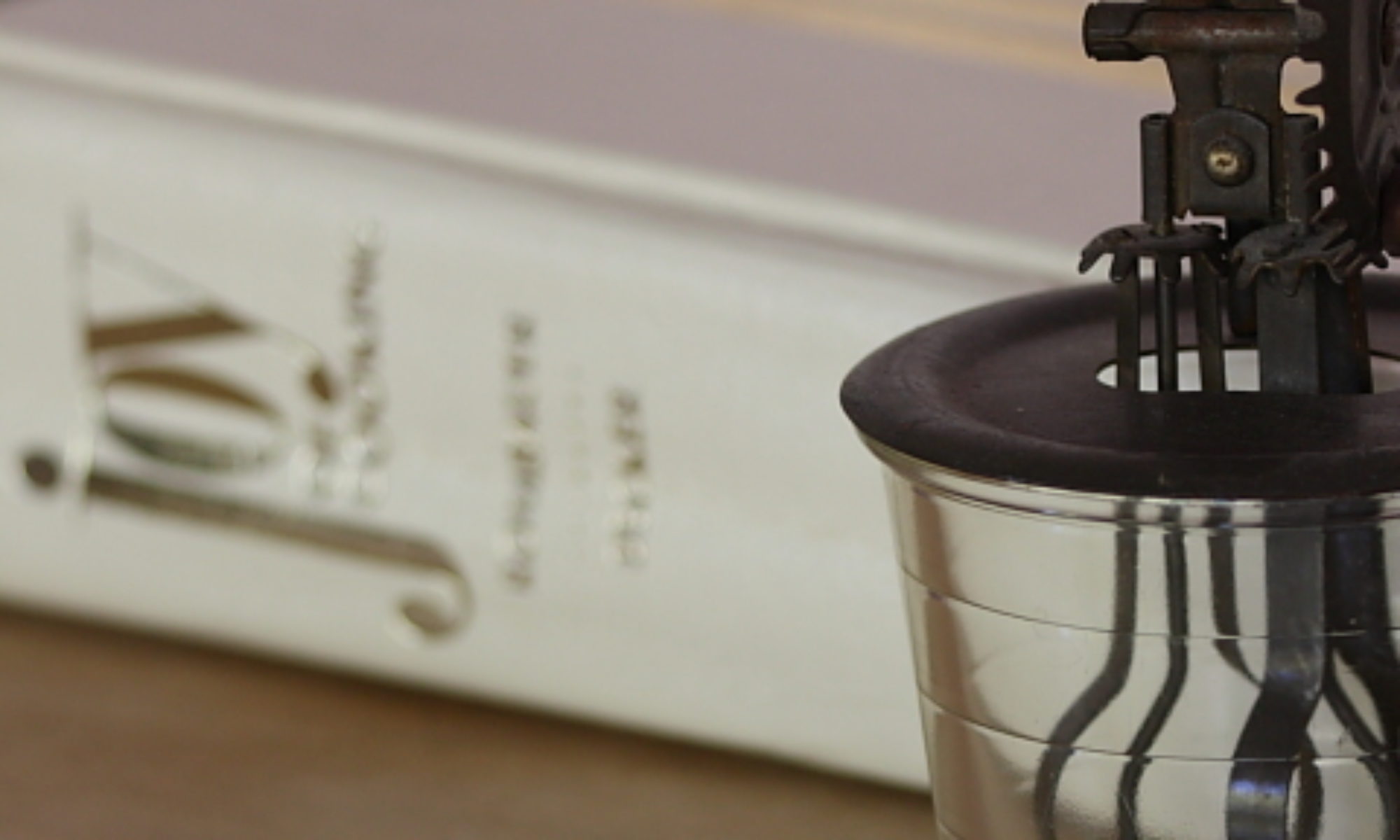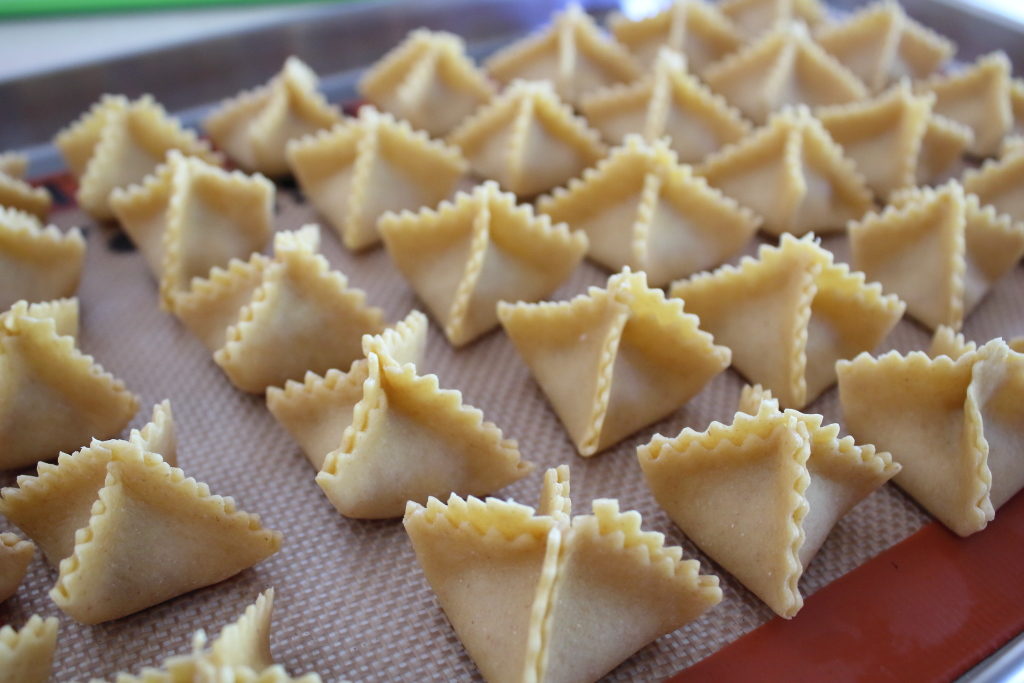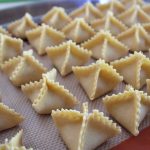
We always like trying new shapes for our pasta. Sure, we know that the pasta will taste basically the same, but the whole idea of different pasta shapes, we think, is to have fun. We’ve made dozens of different shapes over the years. Don’t believe it? Well, just click on shaping pasta to see, and maybe select a new shape to try. Next time, of course; this time, you’ll be making fagottini!
Our extensive research (30 seconds on the Internet) indicates that fagottini means little packages in Italian. It could be, as these do look like little packages, but we’ll defer to anyone who actually speaks Italian. Plus, they’ll be able to pronounce it correctly.
But, let’s get on with shaping pasta, shall we?
Shaping Fagottini
Ingredients
- 8 ounces pasta dough, ready to roll (see note)
- 1 cup pasta filling, such as corn and walnut (see note)
Instructions
- Cut a golf ball-sized piece of dough, and roll it into a sheet with a thickness of about 1/16th of an inch.
- Place the sheet on a cutting board, and, using a fluted cutter, cut into squares about 2 inches on a side. Scraps can be mixed in with the next piece of dough and re-rolled.
- Pipe, or spoon, about a teaspoon of filling into the center of each square.
- Dip your finger in a small bowl of water and moisten the edges of the pasta square.
- Fold the pasta along each of the long edges, turning the corners up so they meet directly above the filling (like a four-sided pyramid), and seal shut.
- Place fagottini on a baking sheet, while you work on the next.
- When the sheet is full, place it in the freezer for about 1 hour, then transfer pasta to plastic bags and seal.
- To cook, bring a large kettle of water to a boil, drop in frozen pasta, reduce the heat to a simmer, and cook the pasta until done, about 6-12 minutes, depending on the thickness.
Notes
Ingredient discussion:
Feel free to change the pasta dough: you can find some of ours by simply searching for pasta dough. And, of course, if you have another filling in mind, use that. We would.
Procedure in detail:
Roll sheets. This is easy if you have a pasta machine, but don’t fret if you haven’t. It’s not that difficult to roll pasta sheets with a rolling pin. They might be thicker, but that’s fine. We’ve even used a wine bottle to roll pasta in a pinch. Simply cut off a golf ball-sized piece of dough and roll to a thickness of about 1/16th of an inch.
Cut squares. Ideally, use a fluted cutter to cut your pasta into squares about 2 inches on a side. If you don’t have a fluted cutter, no big deal; just use a knife, making sure to place the sheets on a cutting board, of course. Any scraps can be re-rolled by mixing them into the next piece of dough.
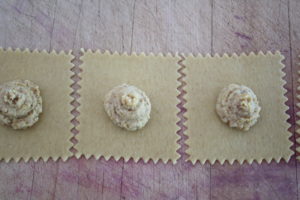
Pipe filling. We really, really find disposable piping bags to be one of the handiest things available. We buy them in rolls of 100, and couldn’t imaging doing without. If you don’t have a piping bag, you can use a spoon to scoop filling into the center (or, you can use a heavy plastic bag with the corner cut off as a piping bag) of the pasta squares. Either way, get about a teaspoon in the center of each square.
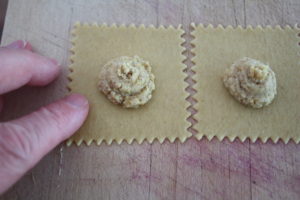
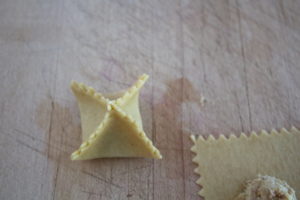
Moisten and fold. Dip your finger into a small bowl of water and lightly moisten the edges of the pasta squares. This helps the seams stick together. Now comes the folding. Lift two adjacent corners of the pasta square and pull them up and together. Pick another corner, and fold that in so that it meets the previous two. Finally, pull up the last corner and fold it in to meet the others, forming a small pyramid. Didn’t get it quite right? Well, try again, and you’ll have it.
Freeze. Once folded, place the fagottini on a baking sheet that’s either dusted with flour or lined with a silicone baking mat (preferred). When the sheet is full, place it in the freezer for about an hour. Frozen pasta is often easier to deal with than fresh; plus, if you made more than you’ll use, you can transfer it to a freezer bag and save for later.
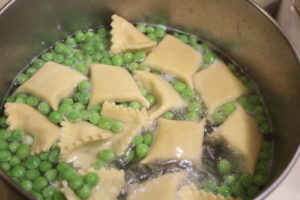
To cook. No need to thaw. Simply bring a large kettle of salted water to a boil and drop in the fagottini. Immediately reduce the heat to keep the water at a simmer, and cook, stirring and swirling the water until the pasta is done. From the frozen state, it’ll take about 6-12 minutes (or even longer), depending on the thickness, how much the pasta dried, etc.
Love the shape, and these, while not the easiest filled pasta to make (that would be angolotti), are pretty easy. Easier than ravioli, say. Plus, they’re different-looking. After all, anyone can get ravioli, but true scratchers will be making fagottini! Five stars.
